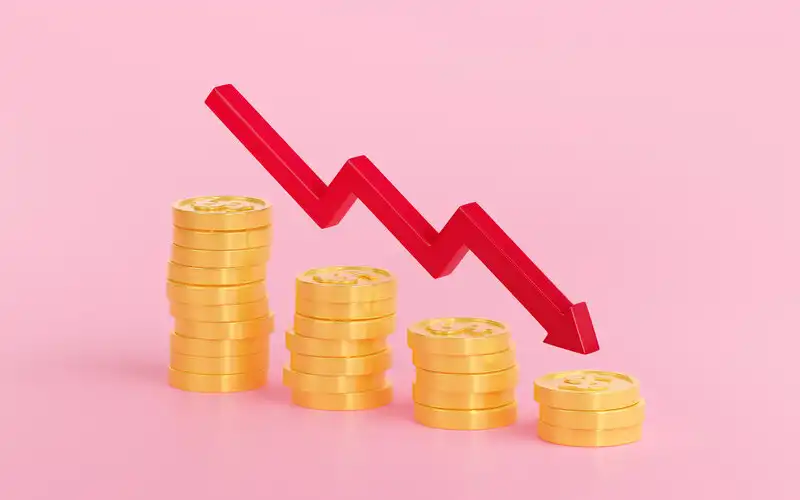This marks the sixth consecutive quarterly decline in the household savings ratio, as household spending continues to outpace the growth in household income.
“The household savings ratio fell to its lowest level in nearly 15 years,” said Katherine Keenan, ABS Head of National Accounts.
“This was driven by higher income tax payable and interest payable on dwellings, and increased spending due to the rising cost of living pressures.”
Interest paid on mortgages grew a further 11.5% during the quarter, and the amount of money spent servicing mortgages more than doubled in the past year.
To put the rate of decline into perspective, the housing savings ratio sat at 13.5% in December 2021 off the back of significant savings buffers built throughout the pandemic.
Speaking to Savings.com.au, PRD Chief Economist Dr Asti Mardiasmo said the decline in household savings is a major concern given our long-term running average is approximately 5%.
“Rapid cash rate rises and cost of living increases have directly impacted our savings levels with more of us either not saving as much, or dipping into our savings,” Dr Mardiasmo said.
“The scary part is that the household savings ratio is at an aggregate level - that is, the whole of Australia.
“That means at a distribution level - so different demographics, different incomes - there will be households that have less than 4.5% in their savings.
“These are our most vulnerable group of people.”
What does this mean for the everyday Aussie?
Dr Mardiasmo noted as an overall, there is now a segregation between those who have a higher income and robust savings pot, and those who don’t.
“We’re living in precarious times. We have those who are still saving, those who are just making ends meet, and those who are starting to dip into their savings,” she said.
“We are seeing more people cancelling extra spending or swapping out their choices (for example, home cooking instead of eating out) in preparation for higher mortgages and rents.
“It's ingrained in our spending culture to pay our mortgage or rent first, especially at the moment where there is such a housing shortage.”
How low will we see household savings go?
Will household savings continue decrease until rate rises stop? Until inflation reaches the RBA’s target band?
According to Dr Mardiasmo, it wouldn’t be surprising to see household savings decline even further.
“The 20% savings from the COVID period declined rapidly to about 12%, then incrementally to 8%, and then bit by bit to 4.5%. It won’t go down this quickly,” she said.
“People are more aware of the current situation and the potential for more cash rate increases in the next few months.
“We may see more people saving ‘for when the time comes’ so to speak. For example, when they roll off their ultra-low fixed rates.”
The RBA noted within its May Statement of Monetary Policy that it expects the household savings ratio to continue to decline over the next year or so, before increasing gradually from mid-2024.
GDP figures reveal 0.2% lift in March quarter
The ABS revealed Gross Domestic Product (GDP) lifted in the March quarter by 0.2% to reach an annual figure of 2.3%.
“This is the sixth straight rise in quarterly GDP but the slowest growth since the Covid-19 Delta lockdowns in the September quarter 2021,” Ms Keenan said.
“Private and public gross fixed capital formation were the main drivers of GDP growth this quarter.”
ANZ and CommBank economists expected a 0.4% quarterly increase in GDP. Meanwhile, NAB hit the nail on the head, correctly predicting a 0.2% lift.
On a per capita basis, GDP was -0.2% over the quarter; it was flat at 0.0% last quarter, indicating a per-capita recession could be on the way, aided by strong migration numbers.
Dwyfor Evans, Head of APAC Macro Strategy at State Street Global Markets, said GDP growth came in at slightly weaker than anticipated.
“Quarterly growth came in at its weakest level since Q4 2018, reflecting the twin headwinds of rising inflation and higher interest rates and their combined impact on underlying demand,” Mr Evans said.
“Weaker exports during the quarter was also a contributory factor – and speaks of a muted China re-opening impact on the Australian economy.
“While the labour market remains robust, continued upside surprises on the cash rate and sticky inflation expectations will continue to weigh over coming quarters.”
Both CommBank and Westpac economists believe the RBA will closely follow the data released in the national accounts on Wednesday when deliberating their next possible rate rise at the July Board meeting.
Advertisement
Need somewhere to store cash and earn interest? The table below features savings accounts with some of the highest interest rates on the market.
Image by upklyak via freepik









 Rachel Horan
Rachel Horan
 Harry O'Sullivan
Harry O'Sullivan
 Jacob Cocciolone
Jacob Cocciolone

